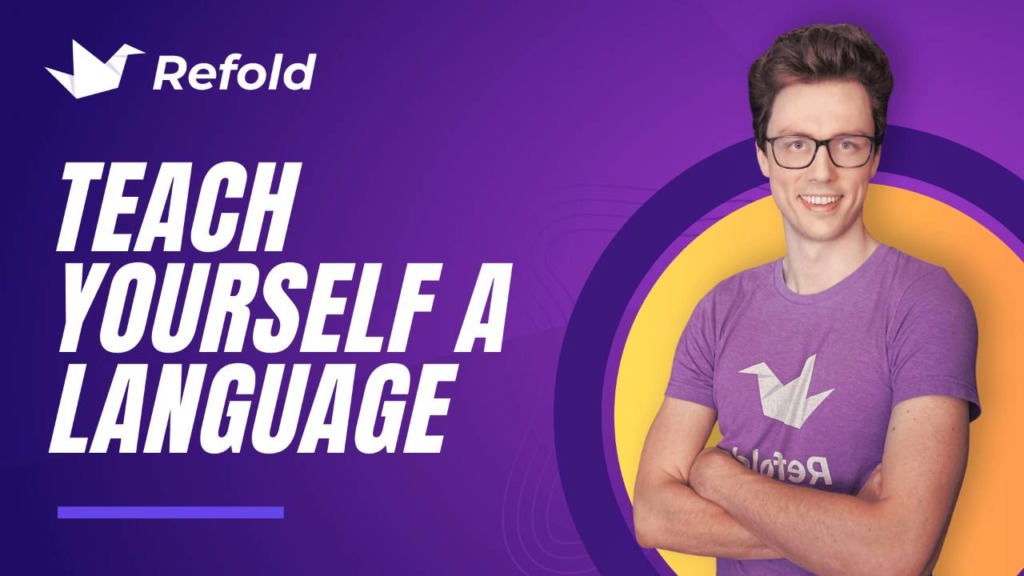In Stage 2A, the goal was to learn the basics of reading your TL. You should now have level 3 comprehension while reading a simple TV show of your choice and using all available tools and supports described in 2A: Comprehensibility Index.
In Stage 2B, you are going to gradually increase the difficulty of your immersion. By the end of Stage 2B, you will achieve level 4 comprehension while immersing with native content meant for adults.
Ideally, you would keep all your content in the same genre while increasing the difficulty level. Unfortunately, this is an unrealistic expectation. Most people will want to branch out into different genres to keep themselves entertained and engaged. In Stage 2B, it’s okay to branch out and expand your knowledge to other domains.
The downside of expanding your domain of focus is that leveling up your comprehension becomes more difficult. In Stage 2C, you will refocus your energy in order to quickly increase your comprehension from level 4 to level 5.
How to Increase Difficulty
In Stage 2A, you wanted to make your immersion content as comprehensible as possible. That meant using easier media and tools to aid comprehension.
As you progress through Stage 2B, you will gradually increase the difficulty of your immersion. As we described in 2A: Comprehensibility Factors, there are many ways to control the difficulty level of your immersion. Below we explain which to use and which to avoid.
Contextual Complexity
Don’t try to increase contextual complexity just yet. Keep using visual media with a narrative structure and try to stay within a domain that you are already familiar with.
That said, prioritize your enjoyment over strictly keeping to one domain. If you want to consume content in a different domain, then go for it. Just be aware that there will be less overlap and you won’t be as familiar with the language used, which will make the content more difficult.
Linguistic Complexity
So far, you’ve been immersing with simplified content because it’s more comprehensible. Recall from 2A: Comprehensibility Factors that linguistic complexity is determined by three factors: audience level, domain difficulty, and whether the content is dubbed or native.
Audience Level
By the end of Stage 2B, you should be intensively immersing with content aimed at adults. Shows for children and adolescents may still be used for free-flow immersion because they will help solidify and acquire the knowledge you’ve obtained.
Domain Difficulty
Don’t pursue difficult domains yet. Try to keep things easy. Slice-of-life will be easier than politics or fantasy.
Dubbed vs Native
Dubbed content is artificially simplified. By the end of Stage 2B, you want to be using only native content for your intensive immersion. This will allow you to become familiar with your TL’s culture and how natives actually speak (e.g. what idioms do they use, what is their sense of humor).
Hacks, Tools, and Supports
In Stage 2B, you should still be using all the tools available to you to help you comprehend your intensive immersion.
Comics
So far, you’ve only been immersing with TV shows and using that immersion as your intensive reading activity.
Another reading activity you can choose is to read comics/manga. Comics are a form of hybrid input that combines text and visual context. The visual context reinforces the meaning of the text.
Comics are a great stepping stone towards reading more complex things like blogs, news, and novels. The text in comics is mostly dialogue and the visual context makes the story comprehensible even if the words are not.
Novels, on the other hand, replace visual context with literary and descriptive language. Learners at this early stage usually find the language in novels too difficult to comprehend and wind up frustrated. How to read novels is explained in Stage 2C.
Webcomics
Nowadays, manga and comics are available online and are known as Webcomics or WebToons.
The downside of webcomics is that the text is usually hardcoded, meaning you can’t highlight and copy/paste words for easy lookups. This isn’t a huge problem for languages with phonetic writing systems, but for Chinese and Japanese, it can be difficult to identify unknown characters. This can be remedied by using Optical Character Recognition (OCR) tools, which allow you to copy text from pictures.
Helpful Links
Webcomics:
- Cover: Comic book reader for windows
- WebToons: Read comics online or via an app
- WebComicsApp: Read comics online or via an app
OCR:
- ShareX (OCR guide): A tool to take screenshots and OCR captured text
- Google Lens: A tool built into Android that allows you to copy and paste text you see in the real world.
- Google Keep: A note-taking service where you can save images.
Text in images is automatically extracted using OCR.
Free-Flow Immersion
Free-flow immersion in Stage 2B is almost the same as in Stage 2A. You will continue to immerse yourself and watch TV shows in real time.
However, at this point, you should start moving away from subtitles in free-flow immersion so that you can get more listening practice. At least 50% of your free-flow immersion time should be without subtitles.
You should have a sizable library of shows you’ve watched free-flow by this point, so pick your favorites and line them up to use for intensive immersion.
How to Spend Your Time
For all of the active immersion activities described above, our recommendations are the same as in 2A. At least 30 minutes of intensive reading (TV or comics) with the remainder of your time spent with free-flow immersion.
Passive Listening
You will get more benefit by passively listening to a show you have intensively immersed with than a show you have free-flow immersed with because you spent the time and energy looking up words and trying to puzzle out the meaning of sentences. This will make passive listening more comprehensible and more engaging. The sooner you passively listen to the content you have intensively immersed with, the more you will get out of it because the memories will be fresh.
If you have built up a decently sized library of passive listening material, then try to focus on that subset of content. However, as always, don’t force yourself to use ONLY that content. Do what’s interesting and engaging.
Level Up
By the end of Stage 2B, you should have level 4 comprehension while reading native content.
To evaluate your comprehension, pick a native show that’s meant for an adult audience (ie. not a children’s show). Watch an episode that you’ve never seen before, stopping to read each subtitle line, but without doing any lookups. You should be able to follow along with the majority of the ideas expressed by the characters, though some details will still be lost.





